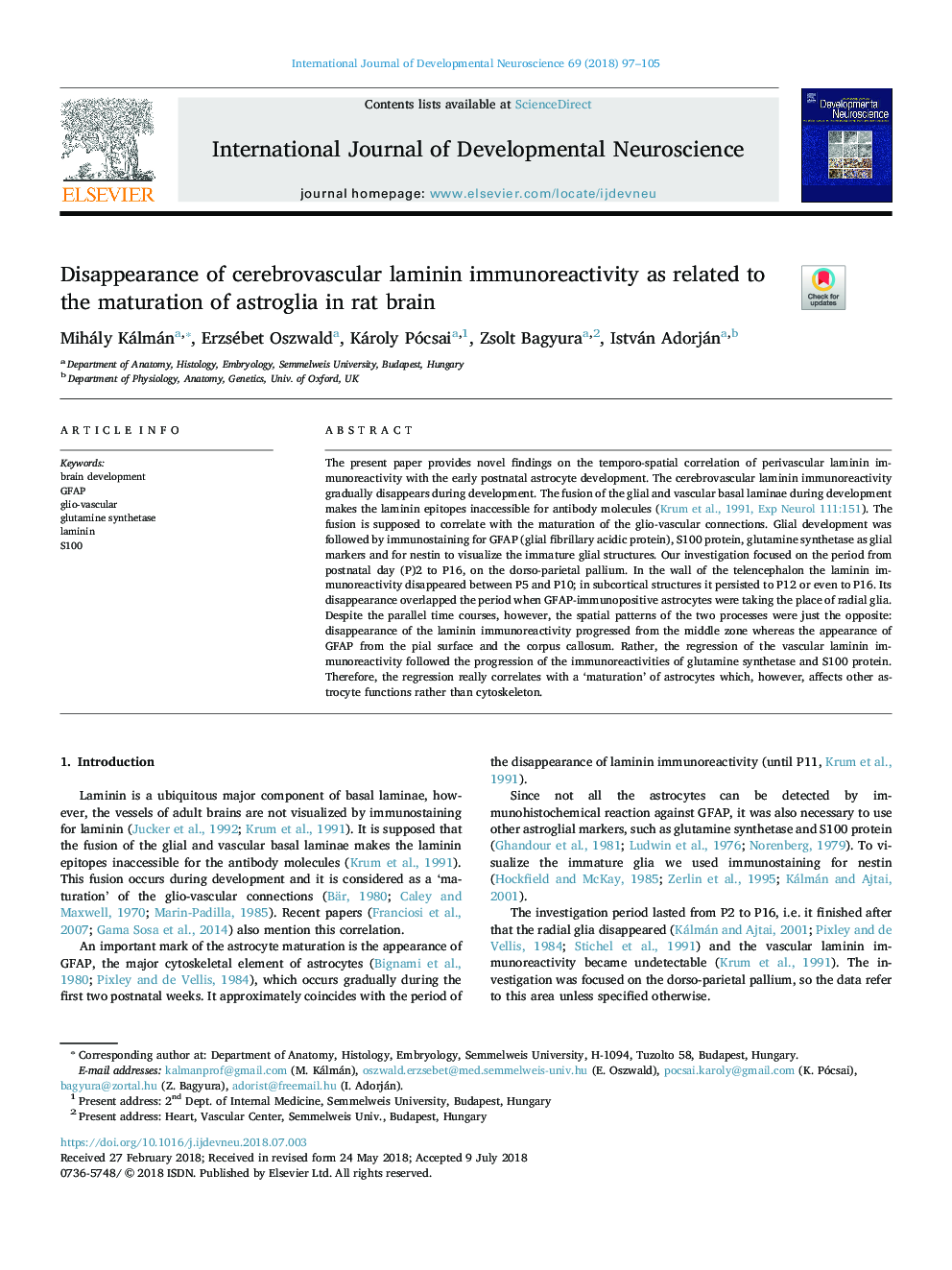| Article ID | Journal | Published Year | Pages | File Type |
|---|---|---|---|---|
| 8626028 | International Journal of Developmental Neuroscience | 2018 | 9 Pages |
Abstract
The present paper provides novel findings on the temporo-spatial correlation of perivascular laminin immunoreactivity with the early postnatal astrocyte development. The cerebrovascular laminin immunoreactivity gradually disappears during development. The fusion of the glial and vascular basal laminae during development makes the laminin epitopes inaccessible for antibody molecules (Krum et al., 1991, Exp Neurol 111:151). The fusion is supposed to correlate with the maturation of the glio-vascular connections. Glial development was followed by immunostaining for GFAP (glial fibrillary acidic protein), S100 protein, glutamine synthetase as glial markers and for nestin to visualize the immature glial structures. Our investigation focused on the period from postnatal day (P)2 to P16, on the dorso-parietal pallium. In the wall of the telencephalon the laminin immunoreactivity disappeared between P5 and P10; in subcortical structures it persisted to P12 or even to P16. Its disappearance overlapped the period when GFAP-immunopositive astrocytes were taking the place of radial glia. Despite the parallel time courses, however, the spatial patterns of the two processes were just the opposite: disappearance of the laminin immunoreactivity progressed from the middle zone whereas the appearance of GFAP from the pial surface and the corpus callosum. Rather, the regression of the vascular laminin immunoreactivity followed the progression of the immunoreactivities of glutamine synthetase and S100 protein. Therefore, the regression really correlates with a 'maturation' of astrocytes which, however, affects other astrocyte functions rather than cytoskeleton.
Related Topics
Life Sciences
Biochemistry, Genetics and Molecular Biology
Developmental Biology
Authors
Mihály Kálmán, Erzsébet Oszwald, Károly Pócsai, Zsolt Bagyura, István Adorján,
